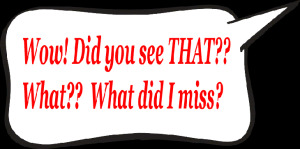 Here’s a phenomena I’m sure you’ll recognize as happening more that once: you just bought a new car and suddenly you see that same make and model everywhere. How have so many people suddenly gotten the same good taste in cars as you?
Here’s a phenomena I’m sure you’ll recognize as happening more that once: you just bought a new car and suddenly you see that same make and model everywhere. How have so many people suddenly gotten the same good taste in cars as you?
You’ve decided to start a family and are in the early months of pregnancy, noticing all those other pregnant women – they are suddenly everywhere! Were there really so many large tummies before, or is there is a sudden baby-boom that you’re coincidentally a part of?
We see we want to see and notice what we are predisposed to notice. Our reality, our unique individual perspective on the world, is made up of what’s inside our unique individual brains just in the moment. What you want to see is truly what you get; we make our own reality.
So how does this relate to writing and written communication? We notice what we are primed to notice. If you want your writing to be noticed, you need to prime the pump to make sure it happens. You do this by making sure that your topic is top of mind with your reader. The familiar topic that delivers on something the reader is prone to look for will be read more diligently than a new topic that is not primed and may be overlooked or ignored, no matter how fabulous and exciting the frontrunner happens to be, until it gathers critical mass. “Did you hear about _____ that’s all over the news?!” “No, I seem to have missed it.”
Another thing that the brain is wired to see is motion. We literally look for movement, as Neanderthal man knew that something moving presented either an opportunity or a threat. In either case, movement gets our attention. We stop, we look, we wonder. Fight, flight, or freeze? Friend or foe?
This is why we can’t see something that’s often right in front of us (“Where did I put my glasses?”); it’s just not moving and so it can present as invisible to the brain. Not a threat? Not an opportunity? Not worth the energy to consider.
Written communication also needs to move or it will be ignored. Action words that create visual mental movement are seen; passive boring words are often overlooked. Is your message ho-hum? No wonder it is routinely bypassed…
Next time the topic is: clichés – the good, the bad, and the ugly.
TRY THIS SKILL SHARPENING TOOL: Change up a routine behavior by not following your standard order of completing the task. Take a shower washing yourself from the bottom up instead of from the top down. Get dressed by putting the opposite arm or leg or foot in your clothes/shoes first. Eat with your non-dominant hand and in a different order than usual. Drive home via a different route. By changing things up you will notice and appreciate different things.
The brain loves patterns, but it also loves novelty. Patterns, mental habits can be extremely helpful for not forgetting things and getting things done. Other patterns that turn into mental ruts can stifle creativity. “I never thought to try doing it that way.” Why not?
